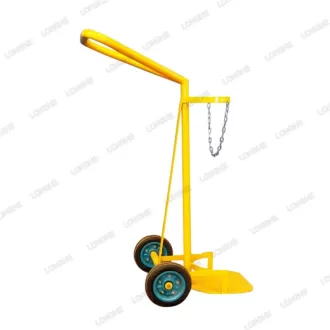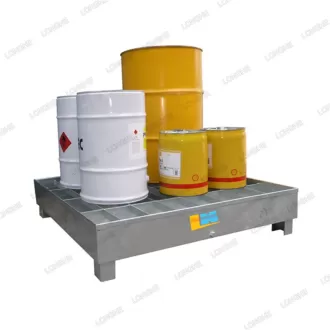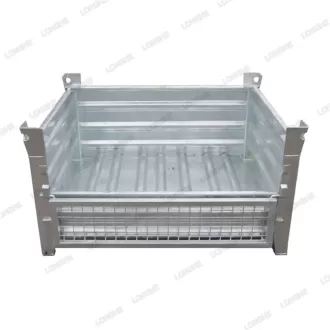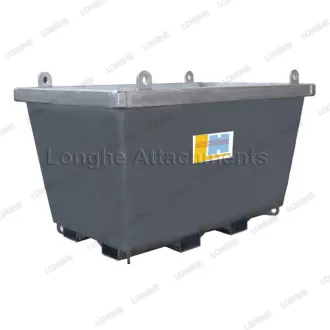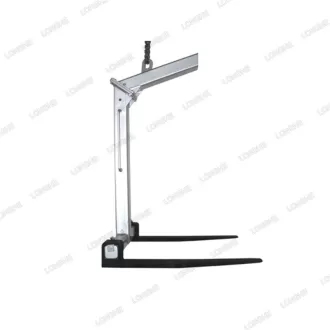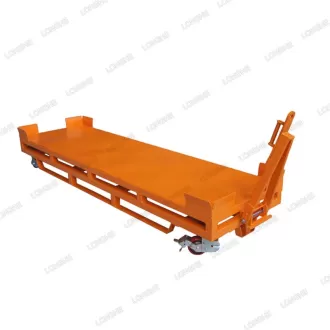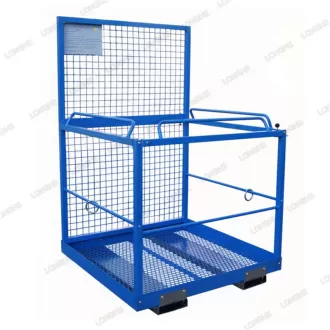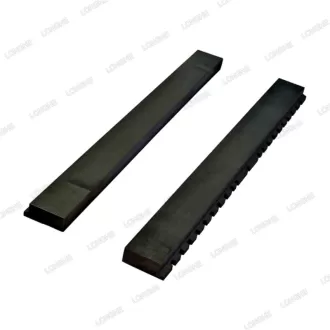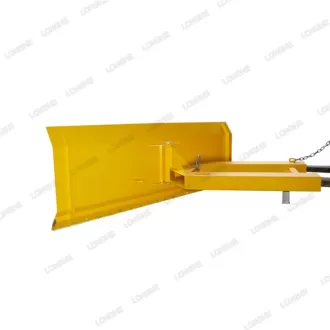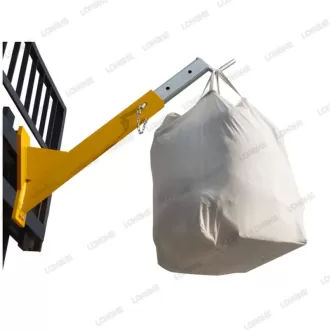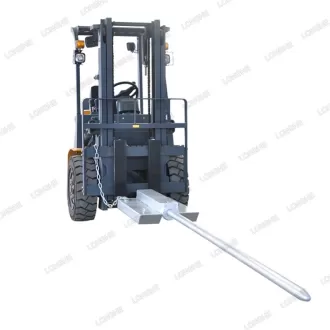Material handling equipment is any machine or tool that is used to transport, process, store, or package materials. For example, forklifts, conveyors, shelves, and even autonomous mobile robots (AMRs).
Using material handling equipment improves efficiency and can help automate processes that would otherwise require a lot of manual labor, saving you time and money. Material handling equipment serves various purposes, such as handling agricultural produce like grain, arranging and stockpiling inventory within warehouses, and facilitating the loading and unloading of materials such as dirt or hardscape.
In this article, we'll delve into the four primary material handling categories and explore the corresponding equipment in each category, empowering you to select the optimal tools for your operational needs.
4 Categories of Material Handling Equipment
The four main categories of material handling equipment are storage and handling equipment, industrial trucks, bulk material handling equipment, and engineered systems.
1. Storage and Handling Equipment
2. Industrial Trucks and Machines
3. Bulk Material Handling Equipment
4. Engineered Systems
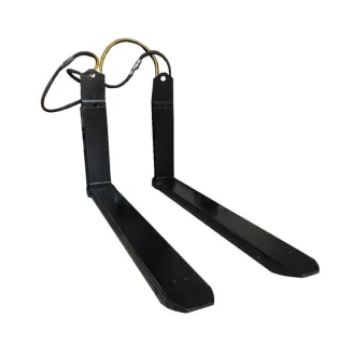
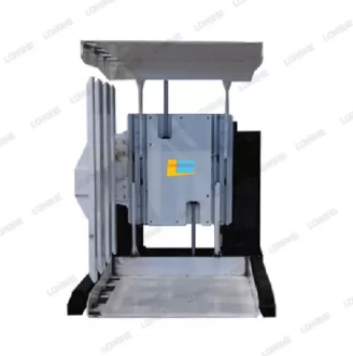
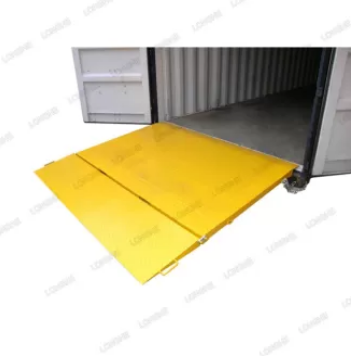
1. Storage and Handling Equipment
Among the four categories, storage and handling equipment stands as the fundamental one. Its purpose is straightforward: to store products either as inventory or as materials awaiting further processing in production. This equipment is designed to optimize space utilization, focusing on both vertical and horizontal storage solutions.
Common types of storage equipment include:
Bins and drawers: Ideal for holding small to medium-sized items, bins feature open tops for easy access by employees or automated systems, while drawers offer high-density storage, maximizing space utilization more efficiently than shelves.
Mezzanines: These semi-permanent structures create an additional floor space between the main floor and the ceiling, effectively expanding a warehouse's usable area, offering extra workspace or enhanced storage capacity.
Pallets: Designed to accommodate packaged loads, pallets facilitate the movement and transportation of goods using industrial trucks or pallet jacks.
Pallet stacking frames: Attached to pallets, these frames enable the stacking of palletized loads, requiring minimal storage space when not in use.
Storage containers: Also known as shipping containers, these containers come in various sizes and are typically used for storing large objects or substantial quantities of materials.
Storage racks: Similar to shelving, storage or pallet racks optimize vertical space by providing multiple horizontal platforms. Drive-in racks enable forklifts to enter and load pallets, increasing storage capacity while sacrificing some accessibility.
2. Industrial Trucks and Machinery
This category encompasses machines employed for the loading and transportation of materials. They range from manual options like hand trucks to motorized vehicles such as forklifts. Industrial trucks predominantly utilize fork attachments, specifically designed for handling palletized loads.
The most common types of industrial trucks for material handling include:
Forklifts: Standard warehouse forklifts are capable of handling loads up to 5,000 pounds and can lift materials to heights ranging from 10 to 15 feet. Larger capacity models are available for heavier loads.
Order pickers: These machines elevate warehouse employees to retrieve orders from elevated shelves. They typically have a load capacity of around 3,000 pounds and can reach heights of up to 32 feet.
Pallet jacks: Also referred to as pallet trucks, these machines are available in manual and electric versions. They usually transport one to two pallets at a time, with a load capacity of up to 5,500 pounds for standard models. High-capacity options are also available.
Side loaders: Unlike traditional forklifts, side loaders have forks positioned at the side rather than the front. This design allows them to maneuver in narrow aisles, such as between warehouse shelving, and load products without rotating the cab.
Walkie stackers: Operating without a cab, the operator stands behind the machine while using it. Similar to pallet jacks, walkie stackers have a limited load capacity ranging from 2,000 to 4,000 pounds and can typically lift materials to heights of 5 to 10 feet.
3. Bulk Material Handling Equipment
Bulk material handling equipment facilitates the movement, loading, and processing of large quantities of items, encompassing both small commodities like grain or rocks, and larger items such as consumer packaged goods.
This equipment is utilized across various settings, from indoor to outdoor environments. For instance, silos are commonly employed to store bulk food items on farms, while conveyors are utilized to transport packages within warehouse facilities.
Common types of bulk material handling equipment include:
1. Conveyors: These systems facilitate the movement and processing of materials in bulk using belts and pulleys, akin to an assembly line, to transport items from one point to another.
2. Bucket elevators: Also known as grain legs or grain elevators, these devices vertically haul flowable bulk materials, commonly found in agricultural settings for moving loose materials like grain or fertilizer.
3. Bulk-handling cranes: These cranes, featuring a two-piece hinged grab, are designed to lift and balance bulk cargo such as coal or mineral ore, building upon the basic crane design.
4. Dump trucks: Specifically engineered for transporting and unloading large quantities of materials, dump trucks are frequently utilized in construction to haul away debris or loose materials.
5. Hoppers: These containers, often used in agriculture, transport bulk products like grain and corn, discharging them through compartments at the bottom.
6. Stackers and reclaimers: Working in tandem, a stacker piles bulk material like ore or coal, while a reclaimer retrieves and guides it to a conveyor for transportation.
7. Silos: Tall cylindrical containers offering high-volume storage for items such as coal, woodchips, or feed.
4. Engineered Systems
Engineered systems are fully automated, utilizing multiple systems to reduce reliance on manual labor. Commonly employed in manufacturing and warehousing, these material handling solutions streamline processes and enhance efficiency.
Here are some of the most common engineered systems:
1. Automated storage and retrieval systems (AS/RS): These robotic delivery systems can efficiently place and retrieve materials from predetermined storage locations.
2. Automated guided vehicles (AGVs): Also known as self-guided vehicles, AGVs are capable of autonomous operation, navigating through marked lines, floor wires, or other programmed controls.
3. Autonomous mobile robots (AMRs): AMRs represent a more advanced form of automation, equipped with sensors to map and adapt to their surroundings as they perform tasks.
4. Palletizers: These systems eliminate the need for human intervention in loading pallets by autonomously stacking items onto pallets and transferring them to conveyors for further processing.
5. Sortation systems: Utilizing automated detection capabilities, sortation systems can identify objects and efficiently route them to their designated locations.
5. Warehouse robots: AI-powered warehouse robots are specifically designed for automating simple, repetitive tasks within warehouse operations, such as picking products from shelves.
Choosing the Right Material Handling Equipment
With a plethora of options available for manufacturing, warehousing, agricultural, or construction needs, selecting the appropriate material handling equipment hinges on several key considerations.
Functionality and Spatial Optimization
Efficiency improvement lies at the core of material handling equipment selection. Assess how best to utilize your available space. For instance, incorporating a mezzanine into a warehouse layout can effectively expand square footage.
Nature of Materials
The characteristics of your materials – their size, shape, and form – dictate the suitable type of handling equipment. Granular substances may necessitate packaging, whereas boxed items can be efficiently palletized.
Outdoor Operations
Outdoor environments may require specialized equipment such as cranes for lifting heavy materials or reclaimers for sorting through stockpiles.
Automation versus Manual Labor
While automation enhances efficiency, it entails associated costs. Striking a balance between automated and manual equipment is often optimal. For instance, robotic delivery systems can handle product picking in a warehouse, followed by human intervention for quality assurance and packaging.






